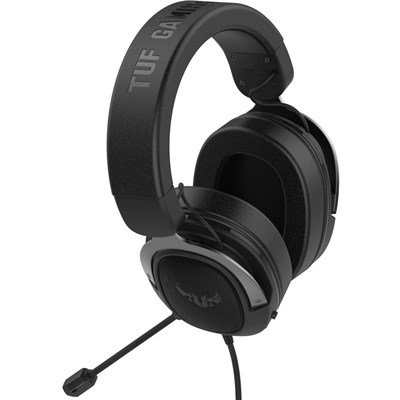Physical sound cards are handcuffed by PC hardware constraints. But RƎLAY VSC is pure software. It blows past those limits with a low-latency, multi-instance professional ASIO driver with SRC that supports stereo, 8-channel, even 64-channel streams. VIRTUAL ASIO DRIVER (virtualasio7583.zip) Download Now VIRTUAL ASIO DRIVER You need 3 things, the SAR driver, an ASIO driver for your sound card if it's good, it came with one, otherwise get ASIO4ALL, and DAW software. Drivers technotrend mobile phones & portable devices bluetooth. Please contact your host operating system support provider or sound card manufacturer for help. Add a virtual sound adapter to the virtual machine. By default, the virtual sound adapter is not installed in the virtual machine. In the Configuration Editor (Settings Configuration Editor), click Sound. Provide the device name in the Device field. Type in or browse to the device that represents your sound card (for example, /dev/dsp).
Download the latest audio driver package from your Mfgrs website. Uninstall the sound card from windows, then run the package from the MFGR. To reinstall the sound card. That way you have established a 'Baseline' to proceed from. This should install any missing/corrupted Codec drivers for your computers sound card. LIVEWIRE+ AES67 IP-AUDIO DRIVER IN DEPTH. Pristine PC Audio: No Sound Card Required. Way back when enormous cart machines still roamed the earth freely, we used XLR connectors to get recorded audio into the console. But when PCs replaced the cart machine, we continued to connect to their sound cards with plain-Jane XLRs and a thick bundle of discrete wires that can’t carry logic, PAD or any.
SYSVAD Audio Sample
System Virtual Audio Device Driver Sample (SYSVAD)
The SYSVAD driver highlights many important features of the WDM audio architecture. These are working implementations with source code that can serve as a starting point for writing a custom driver for a proprietary audio device.
The sysvad solution file contains the following projects.
TabletAudioSample
The TabletAudioSample project demonstrates how to develop a WDM audio driver that exposes support for multiple audio devices. Some of these audio devices are embedded (speakers, mic arrays) in the system while others are pluggable (headphone speaker/mic, Bluetooth headsets speaker/mic). The driver uses WaveRT and audio offloading for rendering devices. The driver uses a 'virtual audio device' instead of an actual hardware-based adapter and highlights the different aspects of the audio offloading WDM audio driver architecture. For more information about the Windows audio engine, see Hardware-Offloaded Audio Processing (Windows Drivers).
EndpointsCommon
The EndpointsCommon project contains common code to both the tablet and phone. For more information, see Universal Windows Drivers for Audio.
SwapAPO
The SwapAPO project demonstrates how to develop audio processing objects. It includes sample code that demonstrates how to register and unregister audio processing objects, and also shows how to customize a Control Panel property page to reflect the available features in the processing object. For more information, see Windows Audio Processing Objects.
KeywordDetectorAdapter
The KeywordDetectorAdapter project demonstrates how to develop a keyword detector adapter. For more information, see Voice Activation.
Download and extract the Sysvad audio sample from GitHub
The SYSVAD audio sample is available on the Windows Driver Samples GitHub.
You can browse the Sysvad audio sample here:
Follow these steps to download and open the SYSVAD sample.
a. You can use GitHub tools to work with the samples. You can also download the universal driver samples in one zip file.
Drivers Virtual Sound Cards & Media Devices Download
b. Download the master.zip file to your local hard drive.
c. Select and hold (or right-click)Windows-driver-samples-master.zip, and choose Extract All. Specify a new folder, or browse to an existing one that will store the extracted files. For example, you could specify C:DriverSamples as the new folder into which the files will be extracted.
d. After the files are extracted, navigate to the following subfolder.
C:DriverSamplesAudioSysvad
Open the driver solution in Visual Studio
In Microsoft Visual Studio, Select File > Open > Project/Solution.. and navigate to the folder that contains the extracted files (for example, C:DriverSamplesAudioSysvad). Double-click the Sysvad solution file to open it.
In Visual Studio locate the Solution Explorer. (If this is not already open, choose Solution Explorer from the View menu.) In Solution Explorer, you can see one solution that has six projects.

Archived Audio Samples
These audio samples support previous versions of the Microsoft Windows Driver Kit (WDK). They are available as part of the zip file download.
Microsoft Virtual Audio Device Driver Sample (Msvad)
AC97 Driver (Ac97)
DirectMusic UART Driver Sample (Dmusuart)
DirectMusic Software Synthesizer Sample (ddksynth)
FM Synthesizer (Fmsynth)
Drivers touch utility. Audio Adapters Samples
Audio Processing Codec Samples
Msfilter Sample Codec (MsFilter)
Msgsm610 Sample Codec (gsm610)
For details, see the readme documentation that accompanies each of these samples in the WDK.
Virtual Device Driver Download
For information on the WDK samples, see Windows Driver Kit Samples Pack (Windows Drivers).
